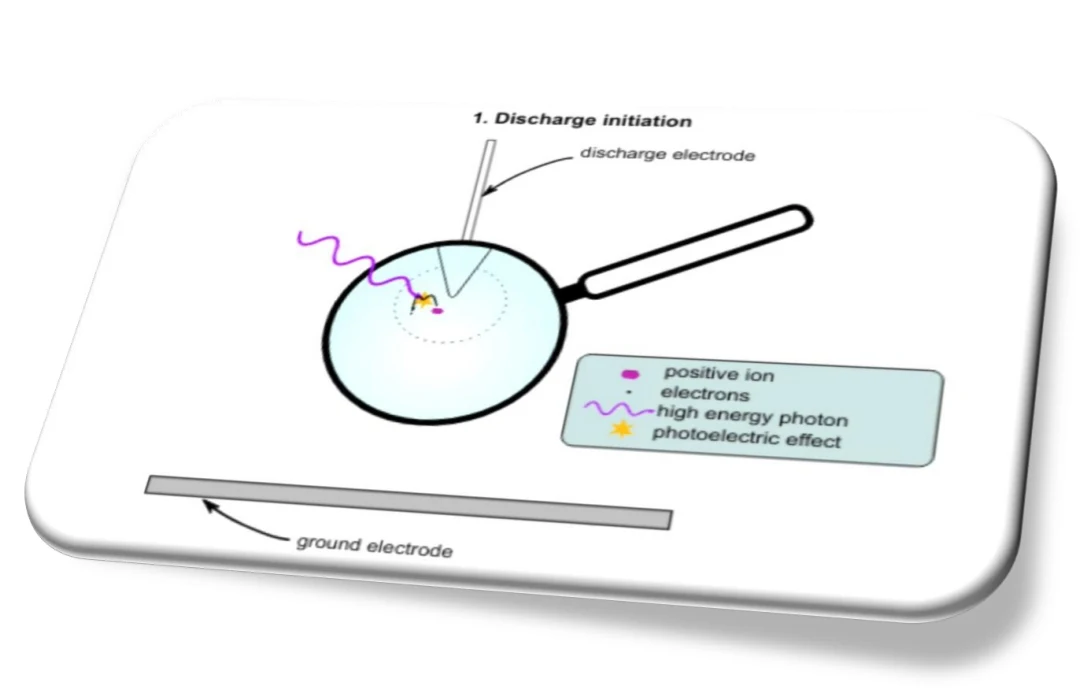A corona discharge is an electrical discharge caused by the ionization of a fluid
such as air surrounding a conductor carrying a high voltage. It represents a local region
where the air has undergone electrical breakdown and become conductive, allowing
charge to continuously leak off the conductor into the air.
devices installed on high-voltage transmission lines to control the electric field distribution
and mitigate the corona effect. These rings are typically mounted on the hardware of
transmission line towers, such as insulator strings or support structures, and are
strategically positioned along the length of the line.
The primary purpose of corona rings is to modify the electric field surrounding the
conductors in order to reduce the intensity of the electric field at critical points and
minimize the likelihood of corona discharge
Corona rings are typically constructed from materials with high electrical
conductivity and corrosion resistance, such as aluminum or copper. They are often
shaped as concentric rings or cylinders with smooth surfaces to facilitate the desired
redistribution of electric field lines. Corona rings play a critical role in controlling corona
discharge and optimizing the performance of high-voltage transmission lines.
Understanding their function and design
Occurs when energy is dissipated as a result of the corona effect in high-voltage
transmission lines. These losses manifest as heat and light energy due to the ionization
of air surrounding the conductors. Let's delve into the advantages, disadvantages, and
methods to reduce corona losses.
Factors Affecting Corona:
The phenomenon of corona is affected by the physical state of the atmosphere as
well as by the conditions of the line. The following are the factors upon which
corona depends.
The corona effect depends upon the ship and conditions of the conductors. The rough and irregular surface will give rise to more corona because unevenness of the surface decreases the value of break down voltage. Thus a stranded conductor has irregular surface and hence gives rise to more corona that a solid conductor.
If the spacing between the conductor is made very layer as compared to their
diameters, there may not be any corona effect. It is because layer distance
between the conductors reduces the electro- static stresses at the conductor
surface, thus avoiding corona formation.
Line Voltage:
The line voltage greatly affects corona. If it is low, there is no charge in the condition of air surrounding the conductors and hence no corona is formed. However, if the line voltage has such a volue that electro static stress developed at the conductor surface make air around the conductor conducting then corona is formed.
As corona is formed due to ionization of air surround ding the conductors, therefore, it is
affected by the physical state of atmosphere. In the stormy weather, the number of ions
is more than normal and such corona occurs at much less voltage as compared with fair
weather.
Methods For Reducing Corona Losses:
The corona loss can be reduced by using:
Conductors with large diameters:
The voltage at which the corona occurs can be increased by increasing the size of
the conductor and hence, the corona loss can be reduced.
Hollow conductors:
These are used to increase the effective diameter of the conductor without using
any additional material. Since, corona loss is inversely proportional to the diameter
of the conductor, corona loss decreases with an increase in the diameter.
Bundled conductors:
These are made up of two or more sub- conductors and is used as a singlephase
conductor. When using two or more sub-conductors as
Increasing the diameter of conductors or bundling multiple smaller conductors
together reduces the electric field intensity around the conductors, lowering the
likelihood of corona discharge and minimizing corona losses.
Control Electric Field Distribution:
Installing corona rings or grading rings at strategic locations along the transmission
line helps redistribute the electric field, reducing its intensity at critical points and
mitigating corona discharge, thereby minimizing corona losses.
Improve Insulator Performance:
Using insulators with higher pollution flashover performance and better
contamination resistance helps mitigate the effects of corona discharge on
insulator surfaces, reducing surface leakage current and corona losses.
Optimize Transmission Line Routing:
Planning the route of transmission lines to avoid areas with high pollution levels or
adverse environmental conditions minimizes surface contamination on insulators,
thereby reducing the risk of corona discharge and associated corona losses.
Increase Conductor Size:
Using conductors with larger diameters reduces the electric field intensity around
the conductors, lowering the likelihood of corona discharge and minimizing corona
losses. Additionally, increasing the size of conductors reduces the surface current
density, which can contribute to corona formation.
Advantages of Corona Losses:
Limitation of Voltage Surges:
Corona discharge can help dissipate excess energy and limit the amplitude of
voltage surges caused by lightning strikes or switching operations, thus protecting
the transmission line equipment from damage.
Reduction of Audible Noise:
While corona discharge produces audible noise, the presence of corona can
reduce the noise generated by wind-induced conductor vibrations. This is because
corona can stabilize the electric field around the conductors, minimizing disruptive
vibrations.
Disadvantages of Corona Losses:
Energy Losses:
Corona losses result in the conversion of electrical energy into heat and light,
leading to reduced efficiency in the transmission system. This translates to higher
operating costs and decreased overall system efficiency.
Insulation Damage:
Intense corona discharge can cause degradation and erosion of insulator surfaces,
compromising their effectiveness and increasing the risk of flashover, which can
lead to power outages and equipment damage






